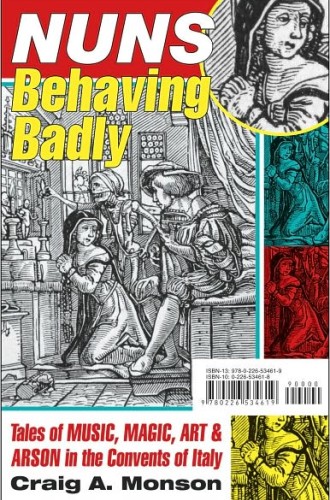Nuns Behaving Badly, by Craig A. Monson
Music historian Craig Monson had the rare privilege of doing research in the Vatican Archive reading room. That collection isn't indexed, and the archivists apparently are not eager to help with anything besides fetching books from the library, so researchers usually have to pore over lots of material before finding what they're after. As he searched for references to composers he was studying, Monson kept stumbling across disciplinary reports on errant nuns. He found these intriguing and decided that they would make an interesting research topic of their own.
In the resulting book, Nuns Behaving Badly, Monson tells of five different convent scandals in Renaissance Italy. They all follow the same pattern: a few nuns break the rules, the prioress covers it up, eventually word gets out, an archbishop comes to the convent and interviews everyone involved, and the nuns are disciplined. In one story, a group of nuns set their convent on fire in order to escape. In another, a young nun sneaked out at night dressed as a man to attend the city's carnival. Evidence of these incidents is primarily found in the reports the archbishop had to send in about his interviews and disciplinary decisions.
We are meant to be thrilled by these escapades, pleasantly shocked at the idea of cloistered women being rebellious. Monson completely undermines this effect in his own prologue, however, when he explains that personal devotion had little to do with entering a convent at the time. Renaissance Italy was experiencing dowry inflation, and many families could put aside enough money to marry off only one of their daughters. The rest were sent to convents, many against their will. Convents were also magnets for reformed prostitutes and fallen women. One can hardly expect this flock to have been docile.



